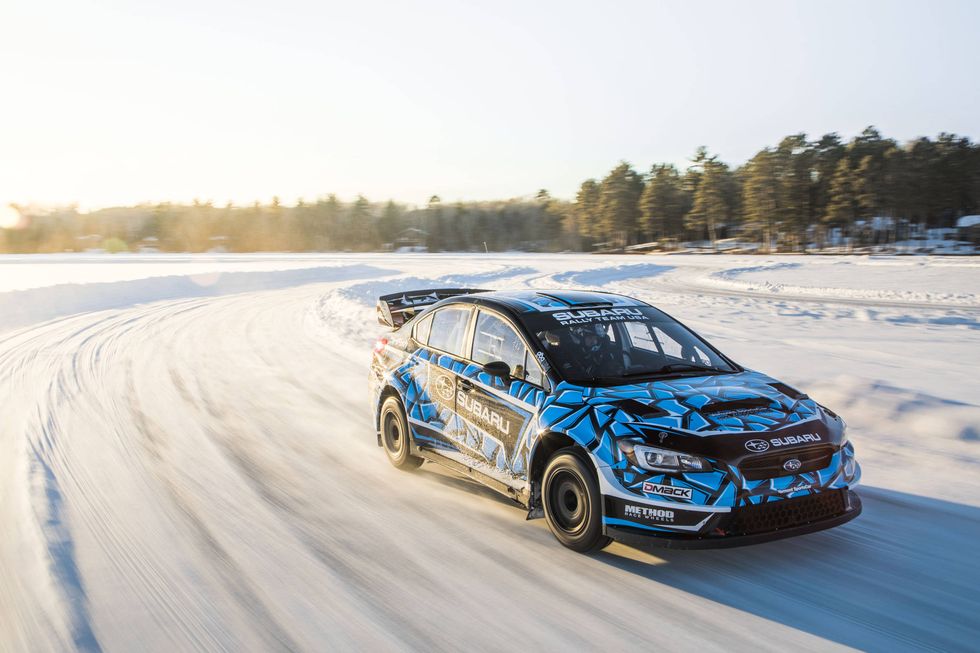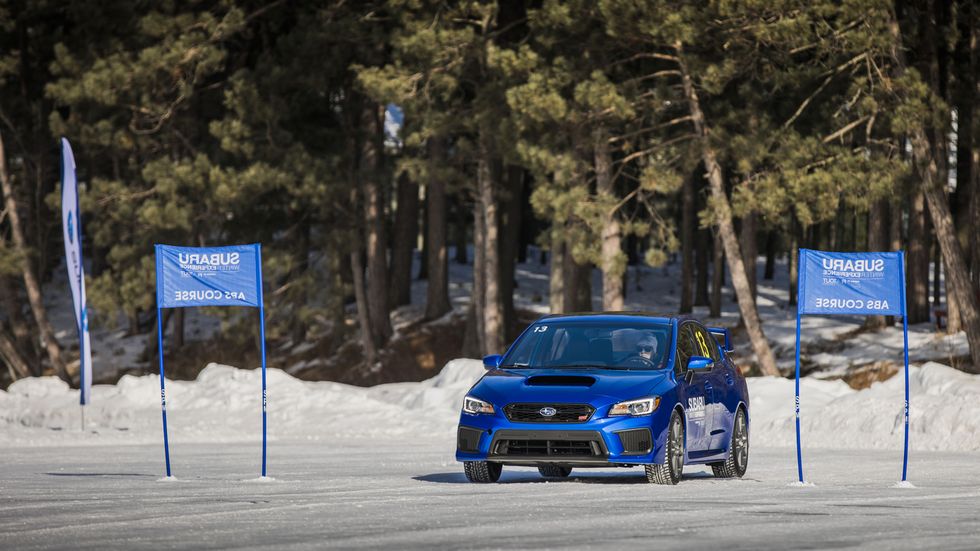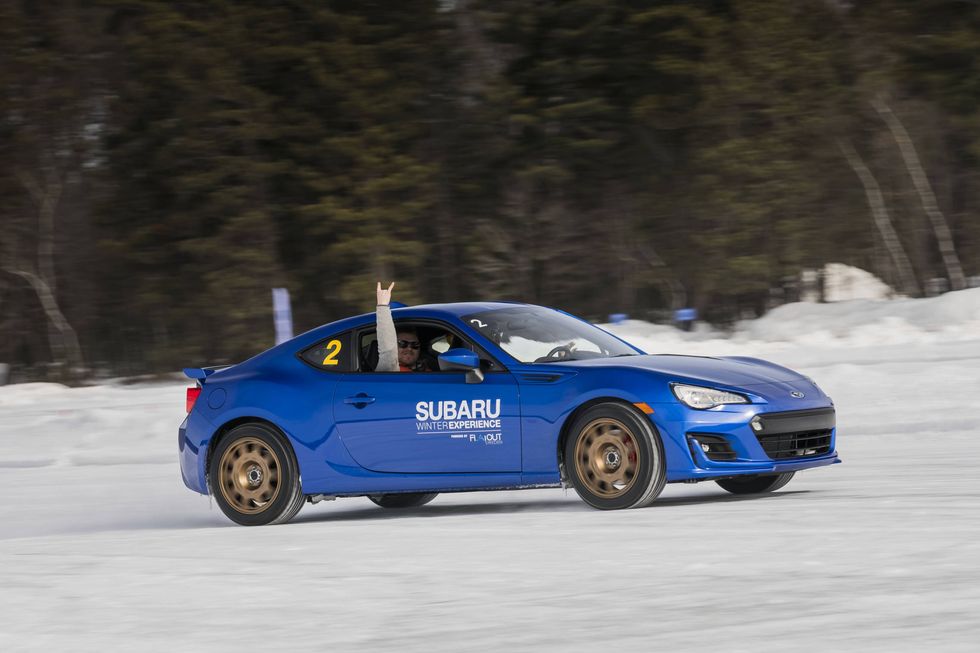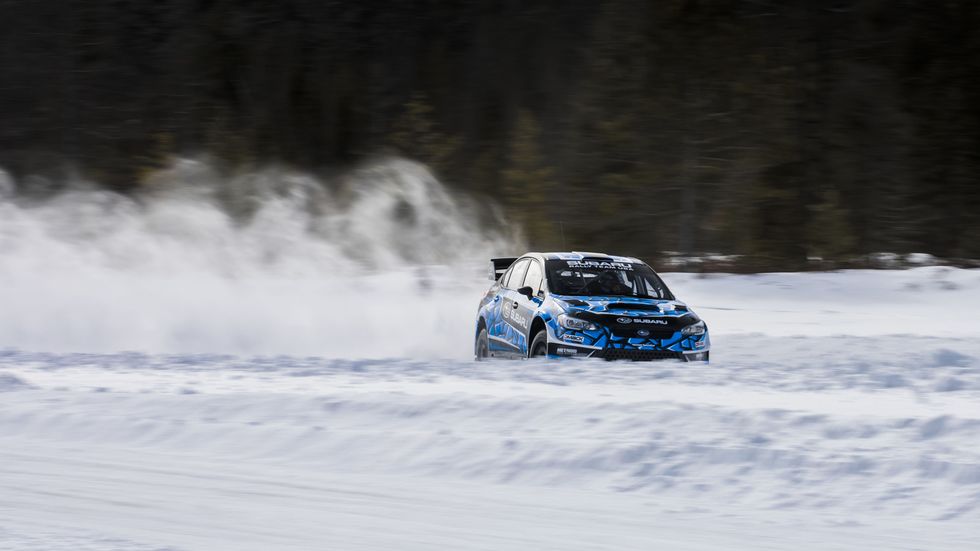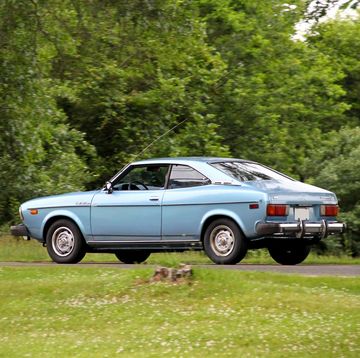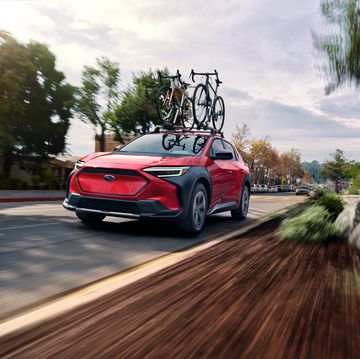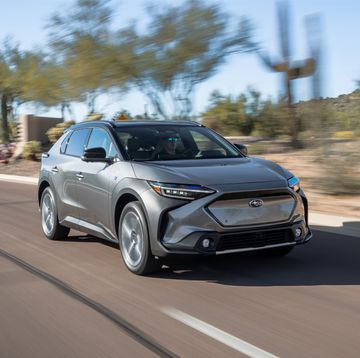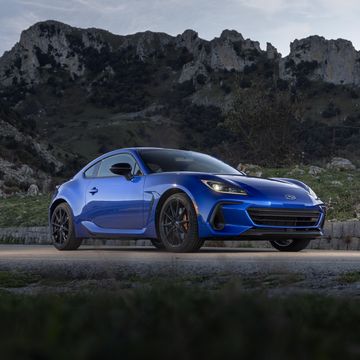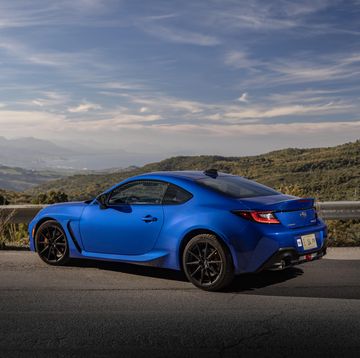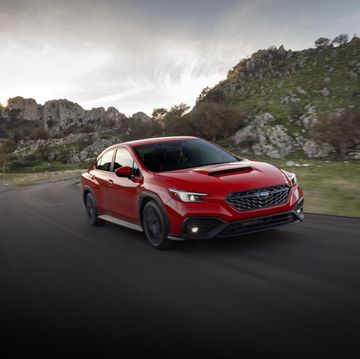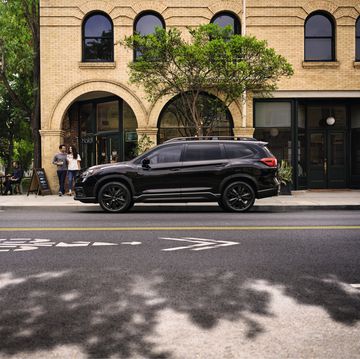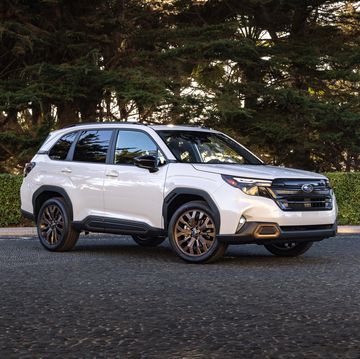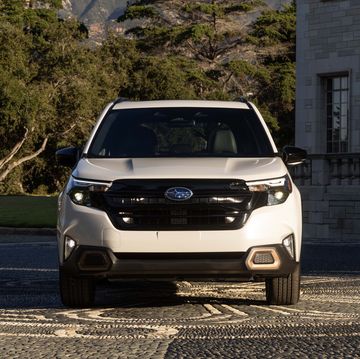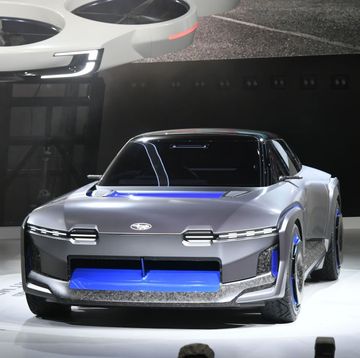High-performance brands, like Mercedes-AMG, BMW, and Porsche, are known for offering winter driving schools that allow owners and drivers with the funds to take a selection of cars to their limits on a frozen lake. But unlike Subaru, those automakers haven’t built a brand on the ability to tackle, traverse and topple anything Mother Nature can throw at it.
Subaru has carved a niche for itself in the industry by fitting nearly every single one of its vehicles with the brand’s Symmetrical All-Wheel-Drive system. It made its debut roughly 46 years ago.
With a history of making vehicles capable of traversing wintery conditions, it only makes sense that Subaru would introduce its own winter driving program for drivers in the U.S. The Subaru Winter Experience is now open and is run with some help from the knowledgeable crews at FlatOut Sweden and DirtFish rally school out of Washington state.
While other automakers opt to have their driving experiences in Canada, Subaru went with Eagle River, Wisconsin, a small city with a population of approximately 1,419 people, located roughly 30 minutes from Rhinelander. It’s a cozy place known for snowmobiling, ice fishing, and frozen lakes that can support the weight of cars. The event I experienced is nearly identical to what Subaru owners and consumers can expect to encounter if they decide to fork the necessary cash over for the trip.
The day starts early, and unlike other driving experiences, there’s no class outlining ways to avoid crashing. The focus with Subaru’s Winter Experience is to get attendees the most amount of time in the vehicles as possible. There’s a quick meet-and-greet with the instructors and the extremely capable rally drivers on hand, which included the likes of Chris Atkinson, Patrik Sandell, and David Higgins.
After that, we paired up and headed out to the course, conveniently located just a minute down a road. The vehicles we piloted included the Subaru BRZ, WRX, and WRX STI. The machines were stock aside from the addition of Lappi tires with 2.5-millimeter studs. The bits of metal are a necessity to get a semblance of grip on the frozen terrain, but they're illegal on Wisconsin’s roads.
On the ice, things got off to a slow start with an ABS course that had a playful take on the “moose test.” We got up to 25 mph behind the wheel of a WRX before slamming on the brakes after crossing a set of cones. We then swerved to the right to miss a "moose," which was outlined with cones, then juked to the left to pass through another set of cones located in the original lane we set off in.
The same course was run two more times at 35 and 45 mph each -- then an additional three more times, this time turning left to avoid hitting the pesky moose. After every single run, instructors asked us how we felt, providing feedback on things to work on and tips on how to improve. They remained outside of the vehicles all day, freezing, but constantly passing their observations on.
It may sound simple, but the ABS test is the ideal way to begin a long day on ice because it allows drivers to slowly come to terms with the slippery surface. The all-wheel-drive WRX sedans, all of which were fitted with automatic transmissions, are also a safe zone compared to the rear-wheel-drive BRZs that we drove afterward.
A little further down the frozen lake sits a slalom course that we attempt to tackle in BRZs with manual gearboxes. In addition to putting us into a rear-wheel-drive car for the first time, the slalom course allows us to sample different traction modes on the sports car. The first run was with traction control fully on, another one was done in “Track Mode,” which limits traction control, but keeps stability control on, and a final run with everything off. Understandably, the progression to putting you in full control over the car is used as another stepping stone, ensuring that no one ever feels overwhelmed.
After the slalom course, we took our first of many breaks. Driving on ice takes a lot of concentration and it’s easy to get discouraged if you don’t feel like you’re doing well. Luckily, the team erected a makeshift igloo on the ice with, mercifully, a wood-burning furnace that provides some warmth and shelter from Wisconsin’s cold weather. It also gave Subaru’s team of race-hardened rally drivers some time to give us a ride in one of the rally-prepped WRXs.
The vehicles were prepared by Vermont SportsCar and were tuned to put down 330 hp. That might not sound like a lot, but with 420 pound-feet of torque, a sequential gearbox, and a weight of around 2,900 pounds, the only word to describe the experience is savage. The shifts, the braking, the acceleration, the way Patrick Sandell had the car going from left to right felt like a roller coaster ride from a frozen place in hell.
Entertaining? You bet. It also helped us get an idea of what we were aiming for on the next course -- a tight section for the BRZ that let us hold some slides. After getting used to how the BRZ handled in its various modes, most of the course was completed in Track Mode, which allowed for some drifts, but nothing too crazy. Keeping the BRZ in third gear throughout the tight track allowed us to get a feel for what the car was trying to do beneath us. And when we summoned some courage, a few laps were completed with everything off.
We weren’t exactly traveling quickly -- the speedometer only registered up to 30 mph for a brief second -- but it doesn’t take a lot to go sideways on a frozen lake in a rear-wheel-drive sports car. The BRZ is loads of fun on ice. Even with the unique tires and studs, keeping the rear end in check is hard work. Jabbing the throttle at the wrong time or taking the wrong line could result in a run-in with the concrete-like snow barrier that surrounds all of the courses.
We then made the switch to the all-wheel-drive WRX and WRX STI sedans on a longer, more wide-open track. Unlike the BRZs, putting the WRX sedans into track mode still sees the vehicles claw for grip, pulling you out of a corner. The AWD system lulls you into a false sense of security, urging you to push, to yank on the wheel a little harder, to enter a corner a little too fast. We did, and the result was clipping a corner of one of the rock-solid barriers, sending a shock through the sedan.
The WRX STIs are completely different beasts. The sedans are much more willing to enter a slide and hold it than their non-STI-badged brethren. That makes sense, considering all the extra go-fast goodies that are fitted to the sedan. The STI doesn’t seem to claw for grip like the regular WRX, but simply delivers it in a more predictable manner. Knowing what the car wants to do goes a long way in getting it to hold a slide.
The final course took everything we had learned and combined it into one large section. The tight track that we enjoyed with the BRZ and the longer course that we experienced with the WRX were included, as was an additional section that we hadn’t driven before. For even more enjoyment, we had all of the vehicles on the track at the same time, running in a staggered order instead of waiting for one vehicle to finish before heading off.
Chasing down other drivers really puts you into a racing mindset and switching between the three cars keeps you awake, requiring the use of different driving styles to get a good lap out of the cars. Going from the tail-happy BRZ to the controlled WRX STI was a challenge. But when you get it right, it’s all worth it.
By the end of the day, I believed that my pace was good. I was able to transition from corner to corner, had managed to stay out of the barriers (for the most part), and could keep a decent drift going through a lengthy sweeper. But I quickly learned that actual rally drivers are a different breed.
At the end of the long day – we spent approximately eight hours driving – we had the opportunity to ride along with one of the many professional rally drivers on hand. I jumped at the opportunity, requesting a few rides in the WRX STI and BRZ. Needless to say, I was left humbled.
You don’t have to be a Subaru owner to experience the brand’s vehicles on ice, but you will have to have to fork over $1,450 for a one-day class, which doesn’t include travel or room and board. That’s not cheap, but it does provide an incredible experience that everyone who drives in ice or snow should partake in at least once. There’s no dummy-friendly classroom work either; it’s all about spending time behind the wheel, which is the most important part.
After completing the program and returning to your daily driver, your first urge will be to practice some of the things you learned. Trust us when we say that’s a bad idea – ask us how we know.
Check out the website for schedule and more information.
